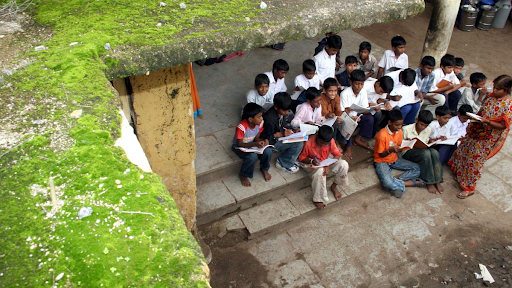




Copyright infringement not intended
Picture Courtesy: https://ndtv.in/india/impeachment-against-allahabad-high-court-judge-shekhar-yadav-what-is-the-whole-controversy-7229377
The opposition INDIA bloc parties in the Rajya Sabha to move an impeachment motion against Allahabad High Court judge Justice Shekhar Kumar Yadav for religious comments.
Appointments of Judges |
A judge can be removed from office for "proven misbehaviour or incapacity." Articles 124 and 218 of the Constitution outline the process for removing Supreme Court and High Court judges, respectively. Although the term "impeachment" does not appear in the Constitution.
The Judges Inquiry Act of 1968 establishes a specific procedure for the removal of a judge.
A motion for impeachment can be introduced in either House of Parliament. To start this, at least 100 Lok Sabha members or 50 Rajya Sabha members must send a signed notice to the Speaker or Chairman.
Following consultations and an examination of relevant materials, the Speaker or Chairman may decide whether or not to accept the motion.
Once the motion is approved, the Speaker or Chairman appoints a three-member committee to investigate the matter. This committee is made up of three members:
The committee frames charges, which are then shared with the judge, who may present a written defence.
After the investigation, the committee submits its report to the Speaker or Chairman, who then presents it to the respective House of Parliament. If the committee discovers evidence of misbehaviour or incapacity, the motion for removal is debated.
For the motion to pass it must be approved by a majority of at least two-thirds of the members present and voting.
If both Houses adopt the motion, it is sent to the President for approval.
Once the motion is approved by both Houses of Parliament, it is sent to the President, who issues an order to remove the judge from office.

Justice V Ramaswami was charged with financial fraud in 1993. The motion failed, and he retired.
In 2011, Justice Soumitra Sen was charged with corruption. He resigned before the motion could be debated in Lok Sabha.
In 2015, Justice S K Gangele was accused of sexual harassment, but the committee cleared him.
Justice J B Pardiwala's impeachment was proposed in 2015 for controversial remarks about reservations, but the motion was dropped after he deleted the remarks.
In 2017, Justice C V Nagarjuna faced impeachment for victimizing a Dalit judge, but the motion failed after MPs withdrew their support.
In 2018, a motion to impeach former Chief Justice of India Dipak Misra was rejected at the preliminary stage by the Rajya Sabha Chairman.
The impeachment process is difficult because it requires a high level of support in Parliament. At least two-thirds of those present and voting must approve the motion, which requires political consensus across party lines.
The Speaker or Chairman of the House also plays an important role in admitting the motion, and the committee's investigation must establish solid evidence of misbehaviour or incapacity.
Must Read Articles:
THE CODE OF CONDUCT JUDGES NEED TO FOLLOW
HOW SC DEALS WITH ERRANT JUDGES
Source:
|
PRACTICE QUESTION Q.The Judges Inquiry Act of 1968 governs the procedure for removing a Supreme Court judge through the impeachment process. In this context, which of the following statements is correct? A) Parliament can remove a Supreme Court judge. B) A judge can be removed for any reason deemed fit by the President. C) The removal motion of a judge cannot be introduced during the Budget Session. D) Judges can only be removed for proved misbehaviour or incapacity. Answer: D Explanation: The Judges Inquiry Act of 1968 governs the process of removing a Supreme Court judge through impeachment. Judges can only be removed for proved misbehaviour or incapacity. The Constitution states that a judge can only be removed by a Presidential order based on a motion passed by both houses of Parliament with a two-thirds majority vote. |






© 2025 iasgyan. All right reserved